Latest Posts
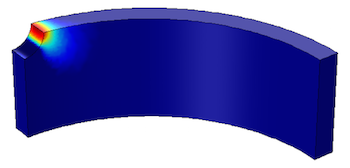
Why Should You Simulate Fatigue?
The Fatigue Module, an add-on to the Structural Mechanics Module and the COMSOL Multiphysics® software, can be used to perform structural fatigue life computations for both strain-based and stressed-based fatigue. In this blog post, we discuss some of the potential application areas and benefits of fatigue testing.

Extend Your Modeling Capacity with LiveLink™ for Excel®
Recently, Fanny blogged about spreadsheets and how they are used in engineering. She mentioned that they are great for collating material properties and other experimental results, and for then using these in COMSOL models. The simulation results from these models can in turn be compared to the original data, and help calibrate material properties and optimize the design. With the release of COMSOL Multiphysics 4.3a, COMSOL has now made it much easier to perform these tasks and extend your modeling […]
COMSOL 4.3a Highlights Video — New Products and Features
Yesterday we announced the release of COMSOL Multiphysics Version 4.3a. The excitement around this release is already rising, and with good reason. Now we’d like to introduce you to the four new products and some of the major new features that are made available, via this COMSOL 4.3a Highlights video duo:
Equations: Who Needs Them?
Most of us take mathematical modeling for granted. After all, we’re taught physics and calculus almost hand-in-hand. But we owe a lot to the early pioneers like Isaac Newton, who demonstrated and strongly promoted interpreting natural phenomena through equations. Differential equations are especially useful since most things change as time marches on. Since we live in 3D space, partial differential equations (i.e., equations that express change in more than one “direction”) arise as the prominent tool to express continuum level […]

Preview: Virtual Conference Guide for Smartphones and other Web-enabled Devices
The COMSOL Conference is about to get kick-started with its first stop in Boston next week, and Milan to follow soon thereafter. Now we’re excited to announce a new feature for this year’s conference attendees: a virtual conference guide for smartphones and other web-enabled devices. The full version is yet to be released, but I was able to test-drive the app and will share it with you here on the blog.
Fatigue — When Cyclic Stress Produces Fractures
Many of the products that engineers design experience cyclic stresses during use that are below the material’s yield stress; unfortunately, these stresses can still be the primary reason for failure. Thus, engineers and designers must find ways of including the effects of cyclic stresses when designing products for long-term use.

User Tip: All About Icons
I give a lot of COMSOL workshops — about 20 so far this year. These are great events and they include hands-on minicourses, which allow me to connect with the audience. One topic that I often spend a few minutes on might surprise you: icons. The icons, especially those found at the nodes in the Model Builder, are packed with useful information. They’re easy to miss because they’re small, but knowing what they mean can be a big help.

Why Adopting COMSOL Multiphysics Is a Good Career Move
Are you a student thinking about where you want to end up after graduation, or a young professional considering how to make yourself more valuable in today’s job market? There are many things you might do to sharpen your skills and bolster your résumé, but here’s a piece of advice you’ll get from us: adopting COMSOL Multiphysics is a good career move. Before you say “of course you’d say that, it’s in your best interest if I use your software,” […]

How Spreadsheets Are Used in Engineering
We’ve noticed that a lot of our customers use spreadsheets, such as Excel®, as part of the modeling process. They use them for storing material property and other data, such as from experiments or other information about workflow associated with their engineering project, and then import this data into COMSOL Multiphysics®. Spreadsheets are also the forum for taking in results from COMSOL software and using this to compare, optimize and verify these material properties. Let’s delve deeper into how spreadsheets […]
What Is ECAD and Why Is It Used in FEA?
Electronic computer-aided design (ECAD) is typically used to design and develop electronic systems. Although the acronym is a mere letter away from “CAD”, there’s actually more to the story than appending the word “electronic” to “computer-aided design”. So, what is ECAD and why is it used in finite element analysis (FEA)?
Moore’s Law for Solvers
At the heart of any simulation software are the solvers. Those are things that take geometry/mesh/physics to the computational results. While it’s convenient to think about solvers in terms of the type of study (think time-dependent, parametric, or eigenvalue), there is a hierarchy of solvers that are usually employed. And at the foundational level of any simulation — and for every iteration — there is a linear solver.
Multiphysics Makes Single-Physics Simulations Better
Coupled physics phenomena (like electrical heating, fluid structure interaction, and conjugate heat transfer) demand multiphysics, which I’ve written about previously in “What is Multiphysics?”. But what if you just have a simple analysis to do — one that has been simplified to the point where only a “single physics” (to coin a term) is considered? What benefits does multiphysics have for this?
The Stresses Subsea Cables are subjected to
In these days of globalization, keeping the world connected is imperative. Information needs to pass as freely and quickly as possible in order to keep markets up-to-date with the latest news and to ensure that commerce can be conducted without hindrance (at least of the technical kind). So what do you do – look to the sky? The answer is no; in fact, 99% of this information is carried by undersea cables. These unsung heroes sit at the bottom of […]
What Is Multiphysics?
If you’re a cynic (like I am sometimes), the term “multiphysics” might irk you. There’s only one set of physical laws, after all. There’s nothing “multi” about it. So what is multiphysics?
Solar Radiation: How Engineers Can Stay Cool on the Beach (Maybe)
The end of August marks the end of summer here in New England. Already nostalgic and unwilling to let the season go, I decided to look into some “beach physics”. In May we released a new solar radiation feature in our Heat Transfer Module that will be helpful in many solar applications — including how to avoid overheating on the beach, apparently. Here’s how engineers can stay cool on the beach.
New Book from One of the Greats in Chemical Engineering Education
COMSOL has had a great relationship with Emeritus Professor Bruce Finlayson of the University of Washington. I first saw him back in 2002 at an American Institute of Chemical Engineering (AIChE) meeting where he gave a presentation on the use of modeling in chemical engineering education. As a former President of AIChE and with a resumé covering some of the leading research and industrial advances within chemical engineering, I was quite intrigued by him taking the time and effort to […]
Modeling a Light Bulb, All Forms of Heat Transfer
When it gets dark, you flick on the lights. If you were to model this simple example, you would need to take all forms of heat transfer within consideration; convection, conduction, and radiation are all at play when a light bulb is flicked on.

A Better File Format for 3D Printing to Replace STL?
I have previously blogged about 3D printing and how it would be great if you could go from model to product in one step. Now it seems as though the Stereolithography (STL) file format is reaching its limits for being useful as a standard for this type of application. The printers themselves, and what they are capable of, are outstripping the abilities of the file formats to support their new capabilities. Moves are being made to develop a better file […]
What Is Piezoelectricity?
All this talk about piezoelectricity got me thinking about how surrounded we are by everyday items whose performances rely on this physical process. Examples include inkjet printers, speakers, electric guitars, and ultrasound imaging systems. With so many different common objects utilizing this phenomenon, it may lead you to wonder: what is piezoelectricity?

3D Printing: Hottest Topic in Manufacturing
Additive manufacturing, or 3D printing as it is more widely known as, is on everybody’s mind right now. Manufacturing folks, engineers, and even the general public have taken an interest in 3D printing. In other words, this is not just a fascinating phenomenon to those in the industry — additive manufacturing has been generally accepted as the next “cool” thing in manufacturing.
Piezoelectric Energy Harvester Helps Increase a Car’s Efficiency
Much has been written lately about increasing the energy efficiency of cars. Batteries and fuel cells are very hot topics, and not so long ago I blogged about the University of Michigan’s use of solar cells to fully power a car. Yet, even on the smallest of scales, such as the sensors in your car, improvements are being made. Utilizing a MEMS (Micro Electromechanical System) piezoelectric energy harvester, Alexander Frej and Ingo Kuehne at Siemens Corporate Technology in Munich are […]
Impedance Boundary Conditions Help in Modeling Nondestructive Testing (NDT)
How do you simplify a 3D geometry to reduce the computational resources required to model it? Do it in 2D. What if the phenomenon can only be properly simulated in 3D? Find the planes of symmetry and reduce the size, most engineering objects are symmetric in some way. What if there is no symmetry, such as the propagation of random cracks through a steel pipe? Well, as this story from COMSOL News 2012 shows, there are other methods, such as […]
A Closer Look at the Physics Involved in Lava Lamps
Remember those retro desk ornaments of the 1960’s, those lamps filled with colorful wax that began to move when the lamp was lit? I’m talking about lava lamps, or as I like to call them, “Rayleigh–Taylor instability machines”. They may not be popular among today’s youth, but I still own one and I thought it would be interesting to look beyond the dyed blobs of wax and observe the physics involved in lava lamps.

Lowering Water Levels by not Taking Away the Water
Düsensauginfiltration (DSI) is a novel technique for lowering water levels at mining and construction sites while not actually having to transport the water away from these sites. This came to my attention at the latest COMSOL Conference in Stuttgart. There, Ph.D. student Yulan Jin and Assistant Professor Dr. Ekkehard Holzbecher from the Georg-August University in Göttingen, Germany was presenting their research into this groundwater lowering technique.
